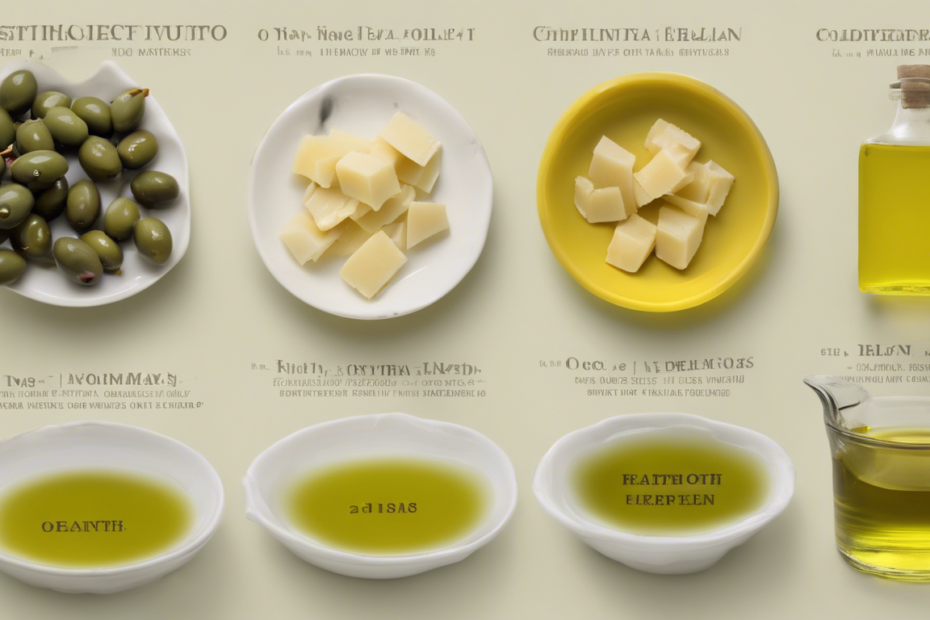Olive oil is a staple in kitchens around the world, praised not only for its rich flavor but also for its numerous health benefits.
In this article, we’ll dive into the fascinating world of olive oil fat content, exploring the different types of olive oil, what makes each unique, and how to choose the right one for your culinary needs.
Whether you’re a seasoned chef or simply someone who loves to cook, understanding olive oil’s properties can elevate your dishes and boost your well-being.
Culinary Applications of Olive Oil
When it comes to cooking and flavoring our favorite dishes, not all fats are created equal, and that’s where olive oil struts its stuff!
With its rich and varied fat content, olive oil is often lauded for both its health benefits and its culinary versatility.
Unlike some oils that overwhelm your food with a greasy feel, olive oil boasts a balanced fat profile that enhances flavors beautifully without masking them.
It’s perfect for drizzling over salads, sautéing veggies, or even as a base for marinades and dressings.
Plus, depending on whether you choose extra virgin, virgin, or refined olive oil, you can explore different taste profiles—from fruity and peppery to light and neutral—giving you plenty of options to elevate your dishes.
So whether you’re whipping up a simple pasta or a gourmet entrée, using olive oil not only amps up the flavor but also serves as a deliciously healthy fat in your culinary repertoire.
Choosing the Right Olive Oil for Your Needs
When it comes to choosing the right olive oil, one important factor to consider is the fat content, which plays a big role in both flavor and health benefits.
Extra virgin olive oil typically has a fat content of about 14-16% saturated fat, which is lower than many other cooking oils.
This makes it a heart-healthy option while still delivering that rich, fruity flavor we all love.
If you’re looking for an oil to use in dressings or drizzling over dishes, go for a high-quality extra virgin olive oil with a robust taste.
On the other hand, if you plan to use it for frying or sautéing, a more refined olive oil with a higher smoke point might be your best bet.
Remember, the right olive oil can elevate your dishes, so always check that label for fat content and other quality indicators before you pour!
Frequently Asked Questions
What types of olive oil are there and how do their fat contents differ?
Olive oil comes in several types, including extra virgin, virgin, and refined.
Extra virgin olive oil has the highest fat content and is the least processed, retaining more nutrients and flavor.
Virgin olive oil has a slightly lower fat content and quality, while refined olive oil, which is processed more heavily, has lower nutritional value and flavor.
What are the health benefits associated with the fat content in olive oil?
Olive oil is rich in monounsaturated fats, which can help reduce bad cholesterol levels and lower the risk of heart disease.
It also contains antioxidants and anti-inflammatory compounds that can contribute to overall health, making it a heart-healthy fat.
How can I use olive oil in my cooking?
Olive oil is versatile in the kitchen.
You can use it for salad dressings, drizzling over cooked dishes, sautéing vegetables, and even baking.
Just be mindful of the smoke point of different types of olive oil; extra virgin is great for low to medium heat, while refined olive oil is suitable for higher temperatures.
What should I look for when choosing olive oil?
Look for high-quality extra virgin olive oil with a harvest date, and check for a seal or certification from a reputable source.
Avoid oils labeled as ‘blended’ or ‘pure’ olive oil, as these may not be 100% pure or of high quality.
Is olive oil suitable for all dietary needs?
Yes, olive oil is generally considered suitable for most dietary needs.
It’s vegan, gluten-free, and can be included in Mediterranean, ketogenic, and many other diets.
However, individuals with specific allergies or health conditions should consult their healthcare provider.


